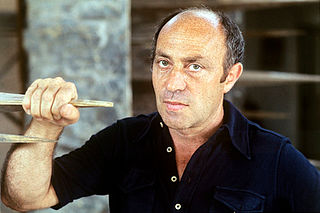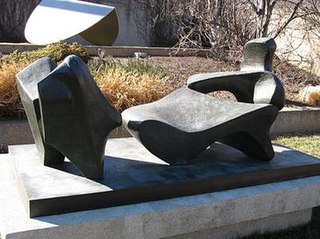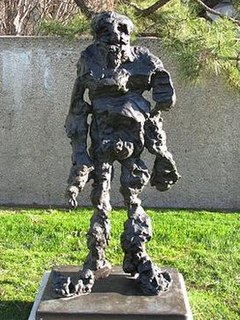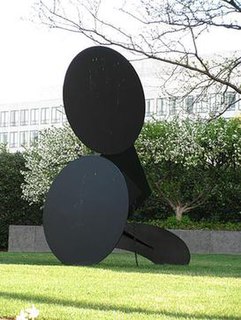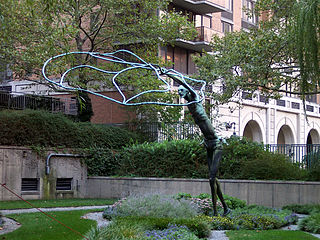| Six Number Two | |
|---|---|
| Artist | Kenneth Snelson |
| Year | 1967 |
| Type | Stainless Steel |
| Dimensions | 253.0 cm× 252.7 cm× 252.7 cm(99 5⁄8 in× 99 1⁄2 in× 99 1⁄2 in) |
Six Number Two is a stainless steel sculpture by Kenneth Snelson.

In metallurgy, stainless steel, also known as inox steel or inox from French inoxydable (inoxidizable), is a steel alloy, with highest percentage contents of iron, chromium, and nickel, with a minimum of 10.5% chromium content by mass and a maximum of 1.2% carbon by mass.
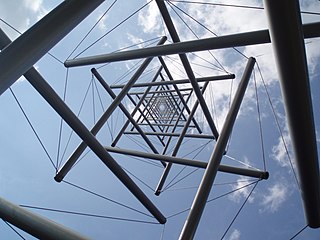
Kenneth Duane Snelson was an American contemporary sculptor and photographer. His sculptural works are composed of flexible and rigid components arranged according to the idea of 'tensegrity'. Snelson preferred the descriptive term floating compression.
It is located at the Annmarie Sculpture Garden, Solomons, Maryland, [1] on loan from the Hirshhorn Museum and Sculpture Garden. [2]

Solomons, also known as Solomons Island, is an unincorporated community and census-designated place (CDP) in Calvert County, Maryland, United States. The population was 2,368 at the 2010 census, up from 1,536 at the 2000 census. Solomons is a popular weekend destination spot in the Baltimore–Washington metropolitan area.

The Hirshhorn Museum and Sculpture Garden is an art museum beside the National Mall, in Washington, D.C., the United States. The museum was initially endowed during the 1960s with the permanent art collection of Joseph H. Hirshhorn. It was designed by architect Gordon Bunshaft and is part of the Smithsonian Institution. It was conceived as the United States' museum of contemporary and modern art and currently focuses its collection-building and exhibition-planning mainly on the post–World War II period, with particular emphasis on art made during the last 50 years.
